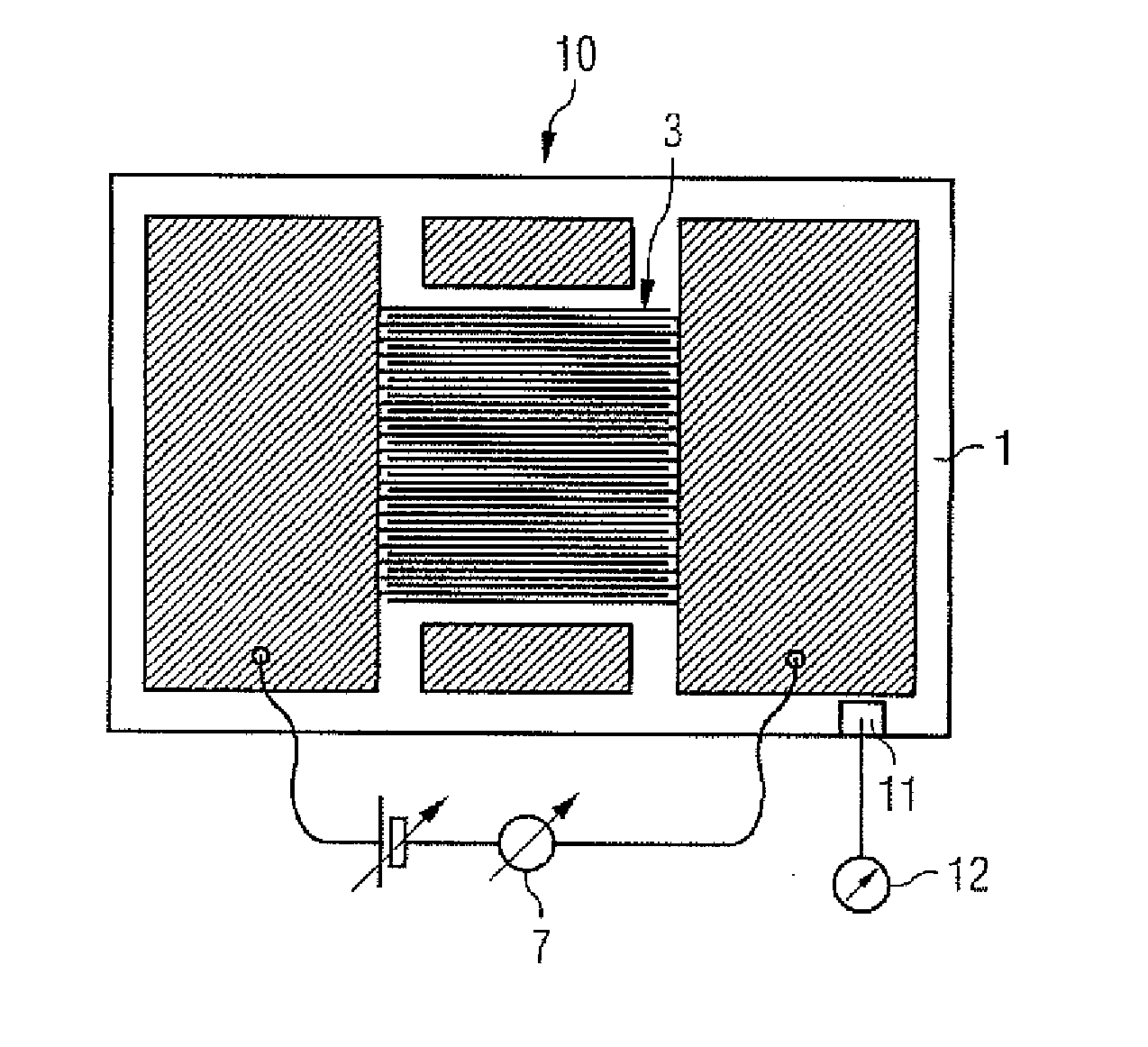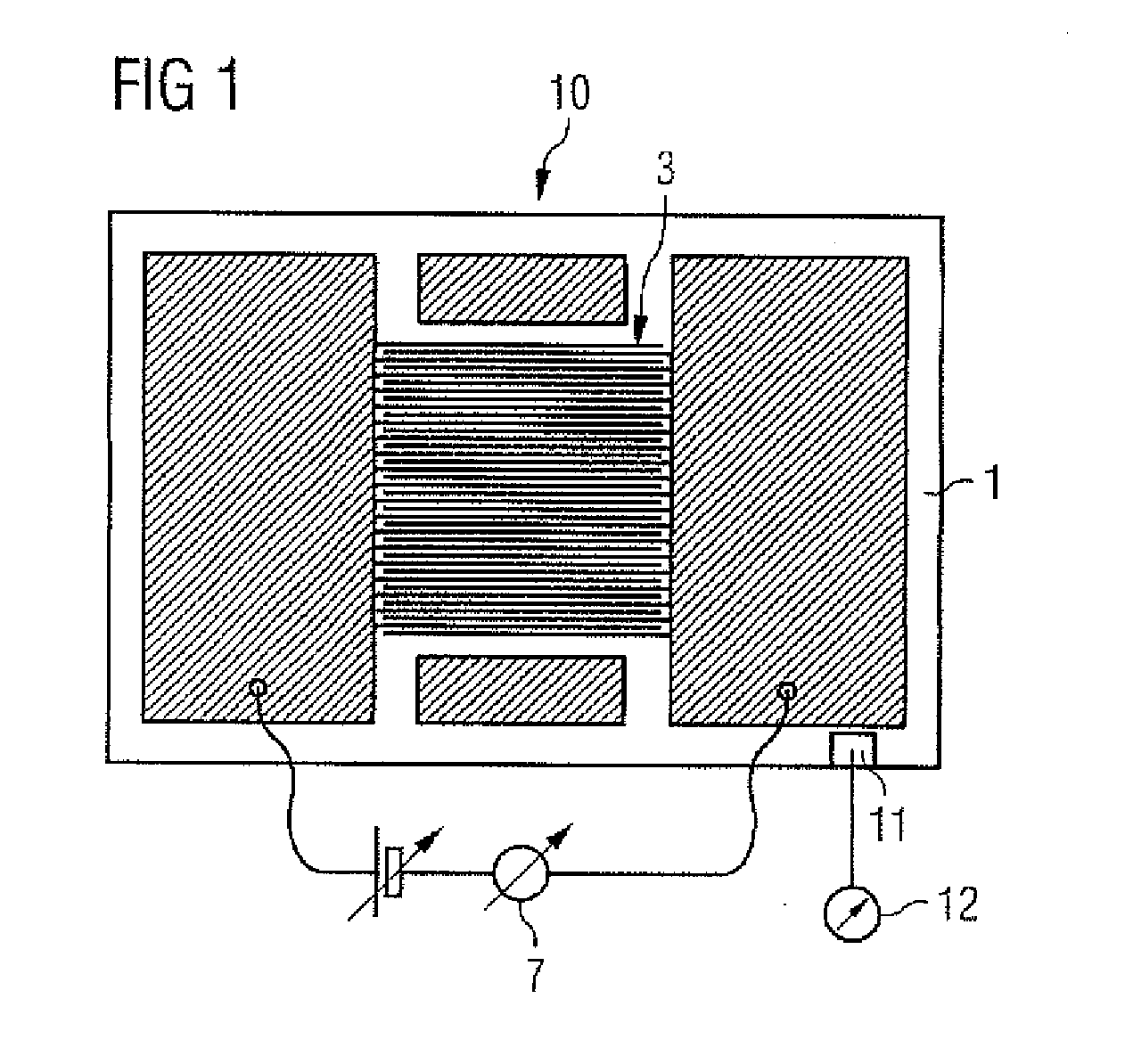Soot Sensor
a sensor and sensor technology, applied in the field of soot sensors, can solve problems such as the change of the electrical resistance of the substrate, and achieve the effects of high measurement sensitivity, high precision, and robust electrode structur
- Summary
- Abstract
- Description
- Claims
- Application Information
AI Technical Summary
Benefits of technology
Problems solved by technology
Method used
Image
Examples
Embodiment Construction
[0026]FIG. 1 shows a soot sensor 10 which is constructed from a substrate 1, a heating element 2 (FIG. 2) and a structure of measurement electrodes 3. The substrate 1 may be made of a ceramic material, or of another material which has electrically insulating properties and readily withstands the burn-off temperature of soot. In order to free the soot sensor 10 of soot by burning, the soot sensor 10 is typically heated with the aid of an electrical heating resistor to temperatures of between 500 and 800° C. The electrically insulating substrate 1 must tolerate these temperatures without damage. The structure of the measurement electrodes 3 is formed as a comb-like (interdigital) structure, an electrically insulating region of the substrate 1 always being visible between two measurement electrodes. The flow of current between the electrode structures is measured with the aid of a current measuring element 7. So long as the soot sensor 10 is entirely free of soot particles 4, only a ve...
PUM
 Login to View More
Login to View More Abstract
Description
Claims
Application Information
 Login to View More
Login to View More - R&D
- Intellectual Property
- Life Sciences
- Materials
- Tech Scout
- Unparalleled Data Quality
- Higher Quality Content
- 60% Fewer Hallucinations
Browse by: Latest US Patents, China's latest patents, Technical Efficacy Thesaurus, Application Domain, Technology Topic, Popular Technical Reports.
© 2025 PatSnap. All rights reserved.Legal|Privacy policy|Modern Slavery Act Transparency Statement|Sitemap|About US| Contact US: help@patsnap.com



